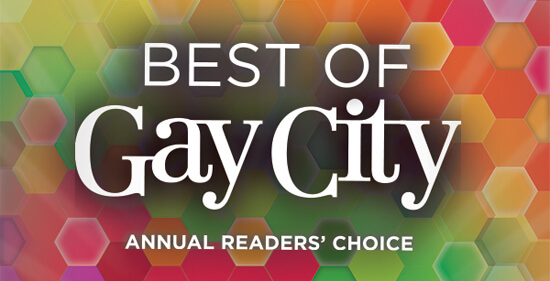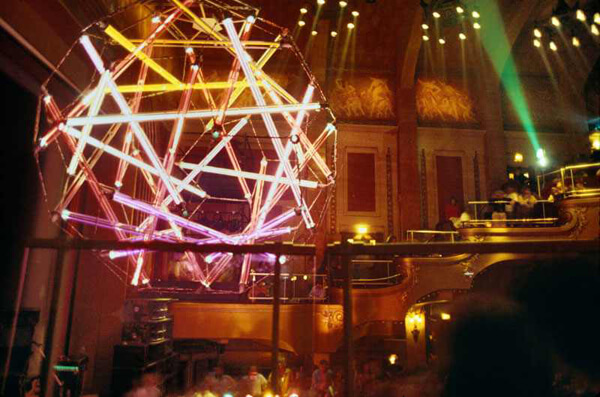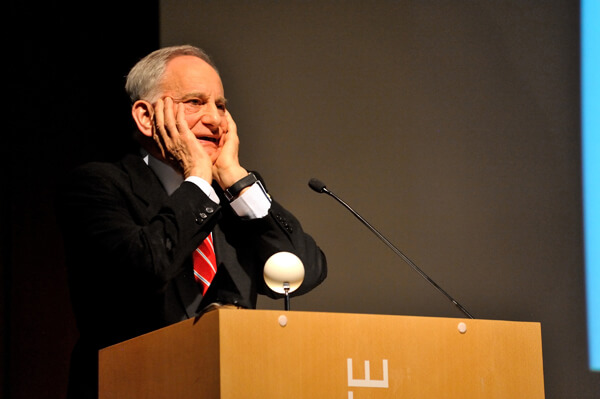“Rocketman,” the lavish Elton John biopic, has opened with the kind of ballyhoo not seen in quite some time. An entire event space focusing on the film has been set up at Soho Dolby, where you can wander through rooms that resemble the various sets in the film (John’s original family home, a massive white grand piano, the Troubador Club in LA, and more), stare at walls covered with memorabilia, and enjoy tea, sandwiches, and scones — all of this while “Bennie and the Jets” stuttering away on the sound system.
I actually had more fun there than at the actual film, which is big and splashy and tabloidy, but you come away knowing not much more about John (and nothing about his indispensable collaborator, lyricist Bernie Taupin) than you did about Freddie Mercury from “Bohemian Rhapsody,” also big and splashy and tabloidy, and also directed by Dexter Fletcher. At a very warm and ingratiating press conference, Fletcher said that he hadn’t wanted to make a conventional biopic at all and, with producer John’s blessing, used his song catalog to attempt something looser and more visceral — which might work better for you than it did for me.
And, rather than slavishly recreate John’s infamous, flamboyant wardrobe — “because no matter how careful you are, someone will always say, ‘But you got the shoes wrong!’ — Fletcher had costumer Julian Day work more from his impressionistic memory of the outfits. The real test, Fletcher said, would have been if John found even one costume he said he wish he’d worn himself. The outrageous first change, in fiery orange with a horned helmet, managed to get the desired reaction from the star.
Fletcher also confided that John had gifted his screen doppelgänger Taron Egerton with a heart-shaped diamond earring, the first item of value he, who would soon become a legendary shopaholic, bought with his initial success. The tirelessly talented Egerton wears this very special memento in the film.
Another big gay, highly influential star of the 1970s also is the subject of a film, and a far more satisfying one it is. “Halston,” unveils the life of the great American designer, who died too soon in 1990, age 57, of AIDS, but whose clean, elegant, ingeniously cut and draped garments remain timeless, sensuous, and highly covetable. He escaped a straitlaced Iowa upbringing and came to New York where he first made his mark as a Bergdorf Goodman milliner, creator of Jackie Kennedy’s famous pillbox. His own minimal but luxe line of clothing became hugely successful, worn by every celebrity and peaking with the introduction of his signature perfume, a complete revolution in that line of product.
Halston was charismatic and tall, dark and androgynously pretty of face, maybe the handsomest of all couturiers, but, like the club he practically called home during its short run, Studio 54, he crashed and burned, largely through hubris. With a huge payday and an expressed wish to dress all women at every economic level, he sold his name and company with the intention of creating a line to be sold at JCPenney. A classic battle between his own desire for creative freedom and the corporate bottom line ensued, with him finally being ousted from his own company.
The party life took its toll, with too many late, intoxicated nights, as did his own fame, for the designer became convinced of his invincibility, and his behavior took on a megalomaniac strain particularly hard on intimates and staff. His final days were sad and reclusive, but I, who worked and played at 54, can easily recall when it was the Versailles of the discos, with him its Sun King, arriving with his entourage of top models all decked out in his latest look (like parachute skirts that billowed to the rhythm of the dance floor, as The Village People’s “Macho Man” blared forth), or lounging on the main banquette in full view of everyone, passing a joint of angel dust to the likes of Warhol, Capote, Diane von Furstenberg, and Potassa, then reigning trans goddess of Manhattan.
I interviewed the film’s gifted director Frédéric Tcheng and producer Roland Ballester about their movie, undoubtedly one of the best, most comprehensive fashion films ever. The project really started with Ballester, who became acquainted with Halston’s niece, Lesley Frowick, through her brother, George, a good friend of his. Leslie was the family member who was closest to Halston, and had worked with him at the end, when he really needed someone like a family member he could trust.
“A few years ago,” Ballester began, “she came to me and wanted to do something about him. I counseled her to write a book about him first, which she did, published by Rizzol in 2014.
“When I read the book, I realized that she was describing a real person — not a one-dimensional icon — and this appealed to me. For a director, there was only one that appealed to me, Frédéric, because I loved his ‘Dior and I,’ for the way he put the craftsmen — the embroiderers and seamstresses — on equal footing as the designer, and wasn’t someone just interested in models and beauty.”
Tcheng admitted, “I had no real experience in fashion, but like many people, I appreciated it for its beauty and creativity. I think the business often gets dismissed as being superficial, which I think is unfair because it actually employs millions of people, and if you took away that economy, the world would just collapse.
“I know I have a track record of fashion films but I am really a film person, first and foremost. But I did do ‘Diana Vreeland: The Eye Has to Travel,’ and was involved with ‘Valentino: The Last Emperor,’ which I co-produced and edited. With this one, I wanted to make a film that my niece could relate to, or my straight friends.
“For us, the business story was really the hook which made the film bigger than just Halston, or even New York in the 1970s. It was also about the 1980s and Reaganomics, which is still happening. Everything now is a financial decision, and for a creative person how do you navigate that? It’s something I live through daily, this tension of business versus creativity.”
Researching the film proved challenging, because, as Ballester said, “A lot of his archive was viciously and needlessly destroyed in the big corporate takeover of his company. They destroyed the videotapes of his shows, and they had all the dresses. Halston had personally saved a few things, and donated all of it to Lesley, the niece. He told her right before he died, ‘When you want it, you will have the material to tell my story.’ That was a huge burden on her for many years.”
Tcheng added, “And that’s how we inherited the tape. I told the producers, ‘I want more.’ So they talked to the Warhol Museum, which found the most incredible amount of things thought to be lost, like Halston in China [a much publicized promotional trip, 1980] tape! And Roland went to NBC again and again, asking for tapes. Finally a box arrived, which we opened, and there they were!
“It was total detective work, and so thrilling to discover not just tapes and footage but the memos between the businessmen and lawyers, hidden reports about the behavior problems of Halston. One report exposed all of the abuse he’d hurl at his staff [in the later years, stressed by the moneymen and drug abuse]. Back in the day, it was something they just had to deal with.”
Ballester interjected, “Halston’s lawyer is a great writer, so his memos were not boring, almost like screenplays because reading them, you feel you were there. One I particularly loved was 30 pages long, like a soap opera.”
Tcheng observed, chuckling, “We managed to catch him in a lie, during his filmed interview, about Halston’s office locks being changed. But we were indeed lucky to have this amazing trove.”
The fabulous interviews they scored really add richness to the film, especially because everyone from Halston’s BFF, a moving but decidedly wary Liza Minnelli, to the gorgeous posse of models who accompanied him everywhere and were dubbed “The Halstonettes” (Pat Cleveland, Karen Bjornson, Alva Chinn, Chris Royer prime among them) to cherished members of his technical staff are all so colorful and forthcoming. Flamboyant original Elsa Peretti, the renowned jewelry designer for Tiffany, was his model and maybe the one woman he loved most, although he was decidedly gay, with an explosive, drugged-out Venezuelan lover, Victor Hugo, who both inspired and tortured him.
Tcheng said, “Elsa tried to pull a Marlene Dietrich with us, wanted to talk but didn’t want to be seen, although we had an appointment with her. But we managed to find this raw interview she did a few months after Halston passed in 1990. She was like in a trance, completely out of this world, but her responses were so genius. As for Liza, it was not easy. We had to turn her no’s to yes. It took a year for her to trust us, largely because we had talked to friends of hers, like Marisa Berenson and Karen Bjornson, who’d had a good experience with us. So, obviously we were not hacks out for blood, and that wait — our second to last interview — was good because the last thing you want is getting someone who will then say nothing. She was guarded and careful with what she said but it was a very friendly, not antagonistic situation to walk into. She was really nervous, because she had been burned before with things she said becoming sensationalized in print. She was very careful, but so gracious and gave us a lot of her time. Hey, she’s Liza Minnelli, so she can turn it on anytime she wants to show that star power. You put her in front of the camera and something happens!
I asked Tcheng if he came away liking the man: “Some people had warned me that I might not. You have to find your own Halston. I personally fell in love with him although he keeps you at a distance with the sunglasses and cool attitude. But you want to know more and pierce the mystery. At first he was like a movie star I was studying, but I was surprised at how much I related to him: the gay story and the 1960s, with their oppression, also him always being the champion of models of color. There’s that footage of him dressing Iman for her very first fashion show, and also plus-size models, like Pat Ast [his chief vendeuse who became a rambunctious Warhol superstar]. Who has a Pat Ast around today?
“Of course, he had his problems. He remains a kind of enigma to me but the fact that he rose above his conservative, Midwest beginnings and was able to express himself and be rewarded I could relate to. I am French and was an engineer in my previous life, but moved to New York to be a filmmaker. New York has that power to be whomever you want. I also appreciate his engineering of clothing, those patterns that look like Cuisinart explains so much about this guy. All the critic said his stuff looked so easy but it took an incredible amount of work. But he never boasted about it. He believed in freeing and liberating women’s bodies in their clothes, and he worked really hard.”
ROCKETMAN | Directed by Dexter Fletcher | Paramount Pictures | Playing citywide
HALSTON | Directed by Frédéric Tcheng | Samuel Goldwyn | Quad Cinema, 34 W. 13th St.; quadcinema.com




































